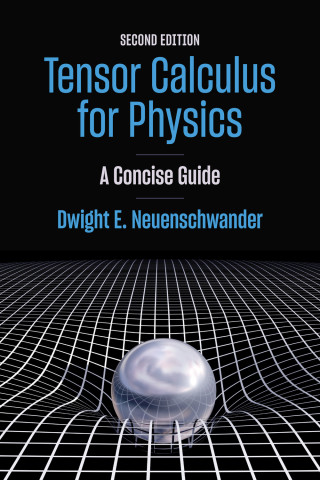
Reviews
A complete, concise and clear exposition of the more traditional tools related to linear filtering.
Since their emergence in the last eighties and early nineties of the twentieth century, wavelets and other multi-scale transforms have become powerful signal and image processing tools. Najmi's book provides physicists and engineers with a clear and concise introduction to this fascinating field.
Book Details
List of Tables
List of Figures
List of Acronyms
Preface
Acknowledgments
1. Analysis in Vector and Function Spaces
1.1. Introduction
1.2. The Lebesgue Integral
1.3. Discrete Time Signals
1.4. Vector Spaces
1.5
List of Tables
List of Figures
List of Acronyms
Preface
Acknowledgments
1. Analysis in Vector and Function Spaces
1.1. Introduction
1.2. The Lebesgue Integral
1.3. Discrete Time Signals
1.4. Vector Spaces
1.5. Linear Independence
1.6. Bases and Basis Vectors
1.7. Normed Vector Spaces
1.8. Inner Product
1.9. Banach and Hilbert Spaces
1.10. Linear Operators, Operator Norm, the Adjoint Operator
1.11. Reproducing Kernel Hilbert Space
1.12. The Dirac Delta Distribution
1.13. Orthonormal Vectors
1.14. Orthogonal Projections
1.15. Multi-Resolution Analysis Subspaces
1.16. Complete and Orthonormal Bases in L2 (R)
1.17. The Dirac Notation
1.18. The Fourier Transform
1.19. The Fourier Series Expansion
1.20. The Discrete Time Fourier Transform
1.21. The Discrete Fourier Transform
1.22. Band-Limited Functions and the Sampling Theorem
1.23. The Basis Operator in L2(R)
1.24. Biorthogonal Bases and Representations in L2 (R)
1.25. Frames in a Finite Dimensional Vector Space
1.26. Frames in L2 (R)
1.27. Dual Frame Construction Algorithm
1.28. Exercises
2. Linear Time-Invariant Systems
2.1. Introduction
2.2. Convolution in Continuous Time
2.3. Convolution in Discrete Time
2.4. Convolution of Finite Length Sequences
2.5. Linear Time-Invariant Systems and the Z Transform
2.6. Spectral Factorization for Finite Length Sequences
2.7. Perfect Reconstruction Quadrature Mirror Filters
2.8. Exercises
3. Time, Frequency, and Scale Localizing Transforms
3.1. Introduction
3.2. The Windowed Fourier Transform
3.3. The Windowed Fourier Transform Inverse
3.4. The Range Space of the Windowed Fourier Transform
3.5. The Discretized Windowed Fourier Transform
3.6. Time-Frequency Resolution of theWindowed Fourier Transform
3.7. The Continuous Wavelet Transform
3.8. The Continuous Wavelet Transform Inverse
3.9. The Range Space of the Continuous Wavelet Transform
3.10. The Morlet, the Mexican Hat, and the Haar Wavelets
3.11. Discretizing the Continuous Wavelet Transform
3.12. Algorithm A' Trous
3.13. The Morlet Scalogram
3.14. Exercises
4. The Haar and Shannon Wavelets
4.1. Introduction
4.2. Haar Multi-Resolution Analysis Subspaces
4.3. Summary and Generalization of Results
4.4. The Spectra of the Haar Filter Coefficients
4.5. Half-Band Finite Impulse Response Filters
4.6. The Shannon Scaling Function
4.7. The Spectrum of the Shannon Filter Coefficients
4.8. Meyer's Wavelet
4.9. Exercises
5. General Properties of Scaling and Wavelet Functions
5.1. Introduction
5.2. Multi-Resolution Analysis Spaces
5.3. The Inverse Relations
5.4. The Shift-Invariant Discrete Wavelet Transform
5.5. Time Domain Properties
5.6. Examples of Finite Length Filter Coefficients
5.7. Frequency Domain Relations
5.8. Orthogonalization of a Basis Set: b1 Spline Wavelet
5.9. The Cascade Algorithm
5.10. Biorthogonal Wavelets
5.11. Multi-Resolution Analysis Using Biorthogonal Wavelets
5.12. Exercises
6. Discrete Wavelet Transform of Discrete Time Signals
6.1. Introduction
6.2. Discrete Time Data and Scaling Function Expansions
6.3. Implementing the DWT for Even Length h0 Filters
6.4. Denoising and Thresholding
6.5. Biorthogonal Wavelets of Compact Support
6.6. The Lazy Filters
6.7. Exercises
7. Wavelet Regularity and Daubechies Solutions
7.1. Introduction
7.2. Zero Moments of the Mother Wavelet
7.3. The Form of H0(z) and the Decay Rate of F(?)
7.4. Daubechies Orthogonal Wavelets of Compact Support
7.5. Wavelet and Scaling Function Vanishing Moments
7.6. Biorthogonal Wavelets of Compact Support
7.7. Biorthogonal Spline Wavelets
7.8. The Lifting Scheme
7.9. Exercises
8. Orthogonal Wavelet Packets
8.1. Introduction
8.2. Review of the Orthogonal Wavelet Transform
8.3. Packet Functions for Orthonormal Wavelets
8.4. Discrete Orthogonal Packet Transform of Finite Length Sequences
8.5. The Best Basis Algorithm
8.6. Exercises
9. Wavelet Transform in Two Dimensions
9.1. Introduction
9.2. The Forward Transform
9.3. The Inverse Transform
9.4. Implementing the Two-Dimensional Wavelet Transform
9.5. Application to Image Compression
9.6. Image Fusion
9.8. Exercises
Bibliography
Index





